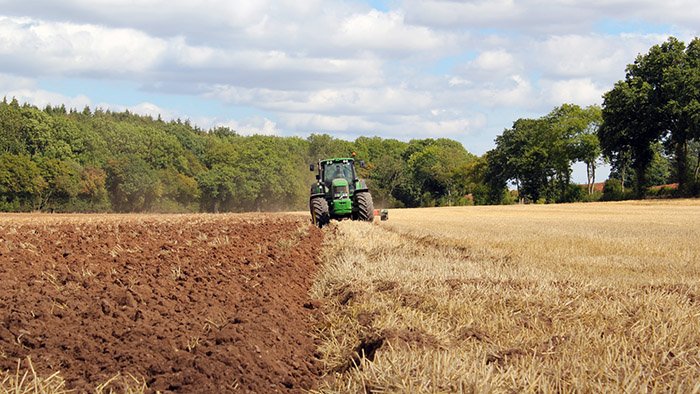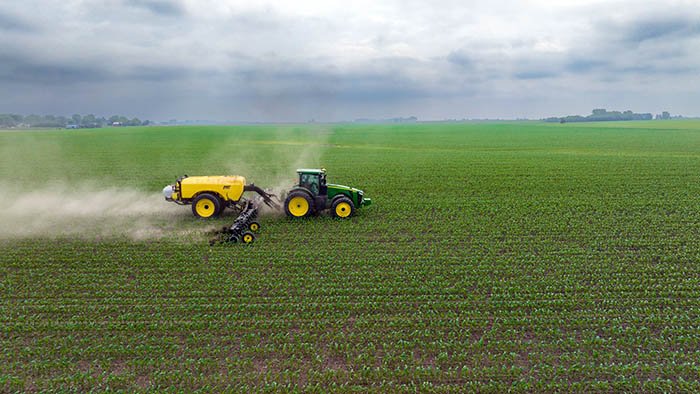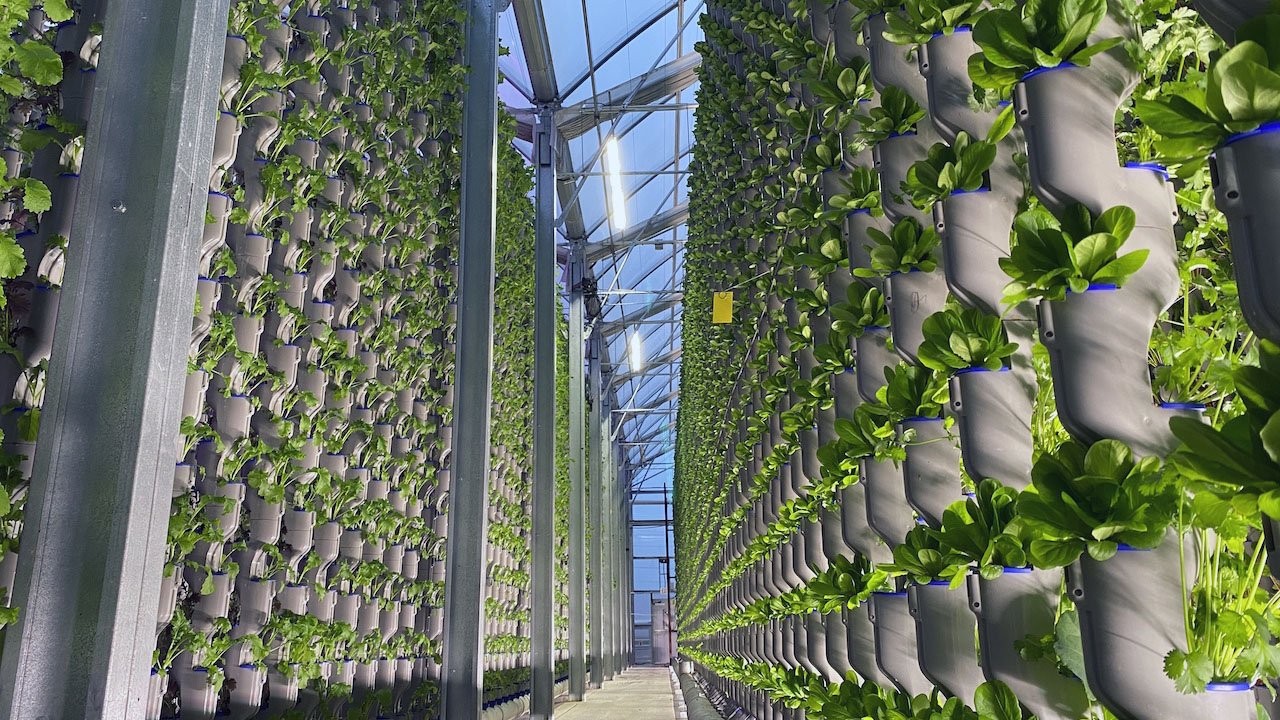Environmental Impact of Traditional Agriculture & Farming
It's no secret that environmental concerns are front-of-mind for many today. Traditional farming methods have sometimes found themselves on the wrong side of sustainability. Join us as we explore the ecological impact of agriculture. We'll also discuss ways to progress toward a sustainable food supply chain.
Summary of the article:
Traditional farming harms the environment and sustainability.
Ancient and modern agricultural practices contribute to deforestation, water pollution, greenhouse gas emissions, and soil degradation.
Sustainable agriculture aims to reduce chemicals, preserve biodiversity, and improve soil health.
Agriculture causes deforestation, water overuse, and greenhouse gas emissions.
Climate change impacts agriculture through productivity, soil quality, and health risks.
Soil degradation is caused by erosion, nutrient depletion, and chemical use.
Monoculture and factory farming harm ecosystems and emit greenhouse gases.
Sustainable agriculture promotes crop rotation, cover crops, and natural pest management.
Agroecology emphasizes working with nature for sustainable food production.
Urban and vertical farming, like hydroponics, offer environmentally friendly solutions.
Consumers can support sustainable agriculture by choosing local and sustainable produce.
Technology can improve efficiency and reduce the environmental impact of agriculture.
How Does Agriculture Affect the Environment?
First, we must consider the timeline of agriculture's impact on the environment. We can't move forward without knowing where we've been and where we stand.
Historical Context - Early Agricultural Practices and Their Environmental Impact
Many blame modern chemicals and machines for agricultural damage to the environment. Yet it’s clear that the problem goes back a lot further than that. As recently as 2018, we learned about the impacts of ancient agricultural practices used more than 2,000 years ago.
Scientists tested samples from Bronze Age animal bones in Ireland. They found evidence that deforestation and pastoral farming were altering soil composition even then.
Climate change also traces back to ancient agriculture. The climate began warming due to European deforestation 6,000 years ago. This was about when people started cutting down trees to create vast farms. Similar contributions began in China around 7,000 years ago when rice paddies began to spread, producing more and more methane.
Evolution of Agricultural Techniques Over the Centuries
These early days of deforestation and the beginnings of wide-scale farming started a trend that continues today. Our food production methods can be incredibly damaging to the environment.
Agriculture today traces its roots back to the Neolithic Revolution. During this period, humans were transitioning from small, nomadic tribes to established settlements. Hunter-gatherer lifestyles made way for agriculture as people began planting crops and raising livestock. Such reliable food sources and safer dwellings led to a boom in the global population that continues today.
As agriculture took hold, we began domesticating plants as well as animals. The earliest farms we know of cultivated wheat, barley, peas, and figs in the Middle East, rice and millet in eastern Asia, and maize in what is now Mexico. These farms began around 9,000-10,000 years ago, alongside animal farming. Cows, sheep, goats, and pigs were raised in the Fertile Crescent of the eastern Mediterranean, northern Africa, and western Asia.
Many ancient farming techniques persisted until the 18th century. Then, preludes to the industrial revolution began, often termed the agricultural revolution. Over about a century, agriculture in Britain transformed to allow farmers to create more food in a more compact area. Methods designed to feed more people more efficiently instead became an environmental disaster. Then these techniques spread across Europe and into the rest of the world.
The environmental impacts have been vast. In 2016, more than 1.7 billion acres of land were used to grow various grains. Livestock grazing covers hundreds of millions of acres more and is one of the primary contributors to methane production. Today, about 70% of freshwater is used for agriculture, with many regions heavily relying on irrigation techniques. Synthetic fertilizers have increased reactive nitrogen levels by as much as 600%. As the population grows, these problems will only worsen unless we make a concerted effort to combat them.
The Rise of Sustainable Agriculture
Sustainable agriculture aims to grow enough food to feed the world without harming the environment. While farmers have employed some sustainable practices throughout history, we'll focus on the modern sustainable agriculture movement.
In the late 20th century, the world began to notice the problems inherent in our agricultural practices. The term "sustainable agriculture" came from the 1980s. Many see the movement’s origin in a 1987 report entitled “Our Common Future” from the World Commission on Environment and Development (WCED).
This WCED report detailed many environmental problems that concerned scientists of the time. It called for international cooperation toward sustainability across all industries, including our food supply, energy production, and urban development.
Today, sustainable agriculture methods aim to do several things, including:
End harmful herbicides and pesticides.
Use sustainable energy sources instead of fossil fuels.
Stop soil degradation and replenish the quality of topsoil.
Enhance working conditions and quality of life for farm workers.
Maintain or improve the economic feasibility of farming as a business.
The Environmental Footprint of Traditional Agriculture
Before we can change how agriculture impacts our environment, we first have to understand the depth and breadth of the problem.
Land Use and Deforestation
Global Rates of Deforestation for Agriculture
According to Greenpeace, “80% of global deforestation is a result of agricultural production, which is also the leading cause of habitat destruction.” The products most closely related to the land use problem include cattle, palm oil, wood pulp and paper, and soy. While many of the worst offenders pledged in 2010 to stop deforestation by 2020, the problem persists.
90%-99% of deforestation in the tropics is cleared for agricultural purposes. Yet the World Economic Forum reports that only 45%-60% is actually put to use for actual production. Many projects clear land and are then abandoned or otherwise fail. At other times, people attempt to clear land by setting fire to the vegetation, but the flames burn more land than intended.
Impact on Biodiversity
The Natural History Museum in the UK notes deforestation is the leading contributor to biodiversity loss. It’s hard to overstate this impact. Over the past forty years, populations of wildlife monitored by scientists have dropped by two-thirds on average. If we don’t handle this problem quickly, we will likely find more and more species approaching extinction.
Water Use and Pollution
Overuse of Freshwater Resources
Fresh water is an essential natural resource. Without it, life would be doomed, and yet, we horribly misuse and abuse this resource, as if we believe it to be inexhaustible. Again, agriculture is a primary contributor to the water crisis.
The National Geographic Society estimates that 70% of the world’s freshwater is currently being used for agriculture. They further state that demand for freshwater will likely increase by half by the year 2050. Experts quoted by the World Economic Forum expect that freshwater demand will exceed supply by 40% by the end of this decade.
Agricultural Runoff and Water Quality
Beyond overuse, agriculture has a lot to answer for where water quality is concerned. The USGS (United States Geological Survey) conducted a National Water Quality Assessment in 2019. They found agricultural runoff to be the top cause of water quality impacts to rivers and streams and the third leading cause for lakes.
Runoff is what you get when rainwater and snowmelt travel across land and into our waterways. When there is more water than the ground can absorb, it travels across the surface, seeking the lowest point. This typically means streams, rivers, lakes, and other bodies of water. As runoff traverses the landscape, it picks up all sorts of pollutants, both natural and manmade, which it then deposits into our waterways.
According to the EPA (Environmental Protection Agency), agricultural runoff contains pollutants like pesticides, nitrogen and phosphorus from fertilizers, bacteria from manure, and other harmful substances. This “can pose risks to aquatic life, fish-eating wildlife, and drinking water supplies.” The same pollutants in runoff can also enter the groundwater supply, affecting water quality there, too.
Traditional Agriculture and Climate Change
Emissions from Agriculture: Greenhouse Gasses and Beyond
According to the EPA, “net global greenhouse gas emissions from agriculture, forestry, and other land use were over 8 billion metric tons of CO2 equivalent, or about 24% of total global greenhouse gas emissions.” This is more than any other category, except electricity and heat production. And as long as agriculture still uses fossil fuels for its electricity, the industry contributes to that number as well.
Agriculture's Role in Global Warming
These greenhouse gas emissions have had dangerous effects on our global climate. Gasses such as carbon dioxide, nitrous oxide, methane, and others act like a greenhouse in the atmosphere. They absorb the heat of the sun instead of allowing it to reflect back into space. This is a significant contributor to global warming, one aspect of climate change.
Yet the news is not entirely bleak. While agriculture's contributions are still strongly negative, there are positive contributions as well. there are several ways agriculture releases greenhouse gasses into the atmosphere. Agriculture and Agri-Food Canada notes that the industry can also help slow climate change through soil CO2 exchange. “Storing, or sequestering, carbon in soil as organic matter, perennial vegetation, and in trees reduces carbon dioxide amounts in the atmosphere.” To achieve this effect on a broad scale, careful management is needed.
Climate Change and Its Impact on Agriculture
Of course, this goes both ways. Yes, agriculture contributes to climate change, but climate change also greatly affects agriculture. The EPA lists three primary ways our changing climate is impacting agribusinesses:
Productivity — Climate change can make conditions better or worse for growing certain crops in certain areas. It can also lead to longer growing seasons, allowing farmers to plant more crop cycles. Climate change is also raising the threat of natural disasters like wildfires. It’s also contributing to the overabundance of crop-damaging pests.
Soil and Water — Climate change is wreaking havoc on our weather systems. Heavier precipitation may sound like a good thing when we’re facing a water crisis, but in reality, it more often leads to flash flooding. This washes away topsoil and increases runoff problems. Also, the potential for the seas to rise is very real, threatening any agriculture that stands at or near sea level.
Health Impacts — Climate-related health dangers impact both farm workers and livestock. They are exposed to excess heat and extreme weather. An increased need for pesticides poses greater exposure risks as well.
Soil Degradation and Traditional Agriculture Methods
Our world is losing healthy topsoil at an alarming rate. The United Nations warns that we could lose as much as 90% of the world’s topsoil by 2050. This would be catastrophic to our food supply, but agriculture is one of the primary contributors to the problem.
Agricultural Practices and Soil Erosion
When we remove natural vegetation to plant crops, we open it up to erosion from rain, wind, and other natural factors. In fact, eurostat Statistics Explained states that “land use and land management are among the main driving forces of soil erosion.”
Nutrient Depletion in Farmlands
Beyond the physical erosion of topsoil, nutrient depletion is causing the soil to become infertile. The United Nations found we’ve already degraded a third of the topsoil on the planet, primarily due to biodiversity loss.
Biodiversity loss occurs when we remove the natural plants and animals in an area to plant a single crop. Different types of vegetation remove and supply different nutrients to the soil. When one crop is repeatedly planted on the same plot of land, it depletes some nutrients while overproducing others.
The Impact of Pesticides and Chemical Fertilizers on Soil Health
The chemicals used in agriculture further contribute to soil depletion. Frontiers in Soil Science notes that “application of chemical fertilizers and pesticides reduced soil pH and increased reactive nitrogen in the soil.” A low soil pH leads to deficiencies in nitrogen as well as minerals such as phosphorus, calcium, and potassium. This leads to more need for fertilizers, weakens microbial biomes, and further produces greenhouse gas emissions.
Industrial Agriculture and Its Consequences
Monoculture and Its Impact on Ecosystems
Monoculture is the opposite of biodiversity. It is what you see when you drive through the heartland of our country and pass acre after acre of nothing but soybeans or corn. There is only one crop being grown across a vast area, producing enough yield to be sent out across the country and exported to other parts of the world.
According to Gallant International, soil depletion is only one impact of this farming practice. Monoculture also leads to these problems:
Excessive use of toxic fertilizers
Unstable soil moisture, which drains water sources nearby
More fossil fuels used to package and distribute crops around the world
Factory Farming and Animal Waste Management
We regularly hear about carbon dioxide and climate change, but it’s not the only troublesome greenhouse gas. Nitrous oxide and methane also contribute to global warming, and both result from factory farming and animal waste. According to Sentient Media, nitrous oxide is nearly 300 times more potent than CO2. Likewise, methane only makes up about 11% of anthropogenic emissions but has an impact that is 25 times more than CO2.
Sustainable Agriculture: A Solution to Environmental Concerns
Principles of Sustainable Agriculture
There are several ways that agriculture can contribute to a healthier, more sustainable future. By promoting biodiversity and decreasing the use of harmful chemicals, we may be able to reverse some of the current damage. The Planet Journey recommends these five principles to create more sustainable agriculture:
Crop rotation — changing which crops are planted in each field after the growing season.
Crop selection — choosing locally adapted plants that are more resilient to their environment. These crops need less irrigation and fewer harmful chemicals.
Cover crops — planting crops that are designed to promote soil health and reduce erosion.
Conservation tillage — tilling the soil while covering part of the surface with crop residue. This technique reduces erosion and returns nutrients to the soil.
Pest management — using natural methods of pest control rather than harmful and toxic chemicals.
A paper from Communications Earth & Environment examines deforestation in the Amazonian region. The authors propose sustainable solutions to help minimize the negative impacts of cleared land. Their primary solution involves integrated land use. This method mixes crops, pastureland, and forestry to provide biodiversity in deforested areas.
Agroecology: Working with Nature, Not Against It
One significant method of making agriculture more sustainable is agroecology. The basic concept of agroecology is to remain as close to natural ecology as possible. This holistic approach crosses many disciplines and blends them into a single system. This allows farms to produce food while promoting and preserving environmental health. To learn more, read this article on agroecology from the Institute for Agriculture and Trade Policy.
Urban and Vertical Farming: Innovation in the Face of Urbanization
Another approach to sustainable agriculture grows food with minimal environmental impact. These methods use technology to rethink how and where we grow our food. Examples include growing hydroponic crops on rooftops and inside buildings in urban settings.
This begs the question, What are Hydroponics? Plants are grown without soil, instead dangling their roots into water. Growers supplement this water with the nutrients crops to thrive. This means fast-growing healthy food with minimal impact. Hydroponic greenhouses from Eden Green Technology, for example, use 99% less land and 98% less water than traditional farming methods. To learn more, read about Hydroponics vs. Traditional Farming.
Frequently Asked Questions
What are five environmental effects of agriculture?
Five of the most worrisome effects are:
Greenhouse gas emissions
Overuse of freshwater supplies for irrigation
Deforestation
Decreased biodiversity
Soil loss and depletion
How does agriculture affect climate change?
Traditional methods of agriculture emit greenhouse gasses into the atmosphere. Factory farming also emits high levels of methane and nitrous oxide.
Can agriculture help the environment?
Yes! Sustainable agriculture proponents are currently exploring several methods of improving the environment. These include methods for climate change mitigation, biodiversity, and more.
How can I support sustainable agriculture as a consumer?
Whenever possible, consumers should attempt to buy local produce and eat less meat. Purchasing sustainably farmed crops, including hydroponic produce, helps promote and fund these farming methods.
What are some of the most environmentally damaging agricultural practices?
Some detrimental practices employed by farmers in various parts of the world include:
Deforestation of tropical rainforests, particularly slash and burn methods
Factory farming
Use of toxic pesticides and fertilizers
How can technology help reduce the environmental impact of agriculture?
High-tech farming methods like hydroponic greenhouses and vertical farms can produce more food in a smaller space. This will allow us to feed urban populations with local produce. We can also reduce natural resource use while minimizing the need for toxic chemicals in the growing process.












